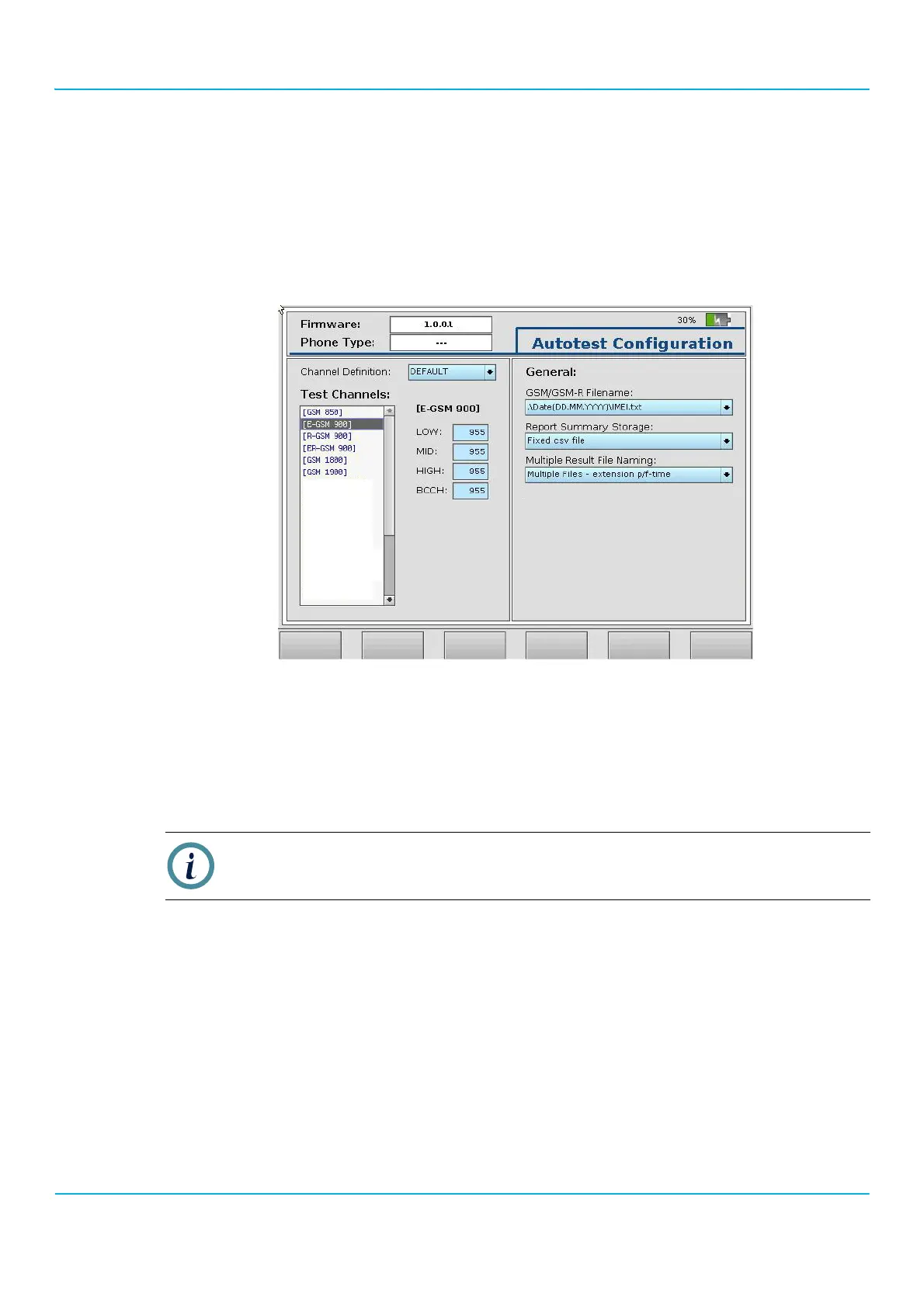2201R Mobile Tester User Guide
Chapter 4 Autotest
47090/322
Copyright © 2015 Aeroflex Limited. All rights reserved.
100
Configuring Autotest operation
Most of the configuration options for Autotest operation are configured with Cobham’s 7315 Scriptor. A few
parameters, however, can be changed from within the 2201R, such as the radio channels, Bluetooth testing or the
results handling options.
To access the Autotest parameters, select Autotest > Config.
The Autotest Configuration menu appears.
Defining the test channels
The parameters on the left allow you to configure the frequency channels on which the measurements shall be
performed. Tests are typically performed on three channel pairs: at the band edges and in the middle of the band.
The test channels are separated by supported technologies (GSM, GSM-R). Today‘s phones support more than one
frequency band. The 2201R allows you to define frequencies for testing in each band.
Test channel configurations
Multiple test channel configurations can be defined, saved and loaded on the 2201R.
In order to load a configuration file, use the Channel Definition selection field. Any changes you enter are stored in
that file.
GSM settings
There are three subtypes for the GSM 900 band. The E-GSM 900 band is the most popular one and is supported by
most GSM phones. If a mobile phone does not support the E-GSM frequencies, select a channel numbers from the
P-GSM band (see Table 15).
A frequency for the BCCH (Broadcast Control Channel or base channel) must be defined separately for each band
because the mobile phone drops a test call if the BCCH is not present. The BCCH may be located on one of the other
test frequencies in the same band.
Note
The GSM frequency bands also apply to GPRS and EDGE (EGPRS) tests.
